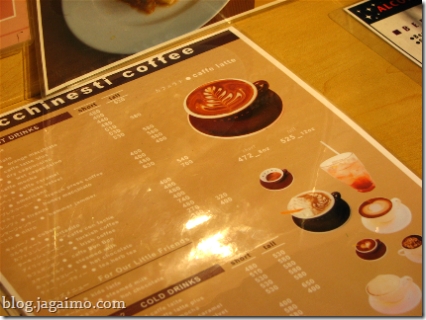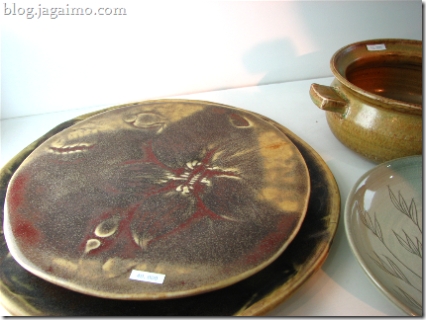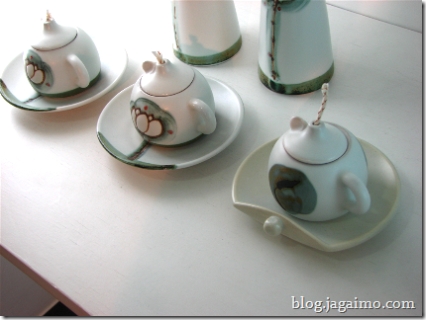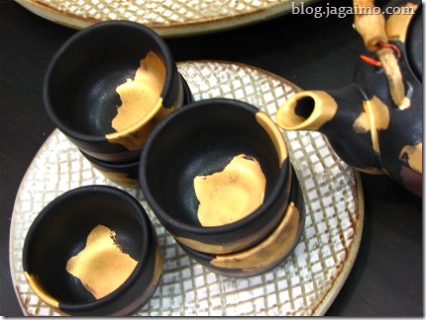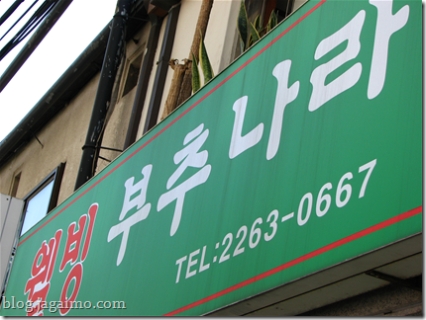I returned to Seattle Tuesday morning... still a little jetlagged, but I managed to pop into the swing of things and sleep almost normally again. I still have a ton of photos to dig through, and things to catch up with... more to come.
Back in Seattle
Macchinesti: Coffee in Tokyo
I've been to the smaller, original location of Macchinesti in Akabanebashi two or three years ago with Hiromi, the Vivace-inspired outlet opened by a protégé of David Schomer. But they also run a bigger shop with a simple savory food menu not far away in Azabu-Juuban, which benefits from a pleasant outdoor seating area.
Hiromi felt the urge for some decent coffee after we woke up late Sunday morning, so we made a pilgrimage to the new location, found in a posh residential area in Tokyo.
Seattle meets Tokyo
Eggs Benedict on the menu
We've never encountered this favorite of Hiromi's on the menu anywhere in Tokyo, and have only seen evidence of it on expensive hotel menus online. In Seattle, we often make eggs florentine or whatever at home, and Hiromi gets her fix for the porcine version when we go out for a weekend brunch.
Take something home
We didn't take any beans home, of course, since there's no coffee brewing equipment in my weekly apartment. For those who live in Tokyo, however, freshly roasted Vivace-blended beans (and some Tokyo-only single-estate treats) are a must-have.
Menu
Katakana-ized menu.
Tokyo Rosetta
Ok, that was a cruel caption. But even Vivace rarely pumps out rosettas as elaborate as this duo. We might have just been lucky, though... one of the two coffees was made with a more typical single-pattern rosetta.
Department store dinner, hand transported from Shibuya to Kawasaki
On a wet and rainy April 28, Hiromi, Hiromi's mother and I trekked to Meiji Jinguu, then briefly toured Shibuya's Tokkyu Foods Show depachika madness. We were planning to have dinner at Hiromi's home that night, so we actually wanted to pick up a few things to take home.
The nifty thing about department store basements in Japan is that you can assemble a fairly elaborate meal without ever needing to whip out a spatula or your handy kitchen saibashi.
Not one of the dishes required more than a bit of reheating, although for one of the two grilled eggplant dishes (far left, middle) I chose to make a quick nerimiso to help the two variations stand apart from each other. Even in that case, however, the department store had a ready-to-buy sauce you could take away to remove even this tiny step of production.
I also made a quick seasoned soup stock for the big ganmodoki (upper left), but everything else was just a matter of heating, at most, and plating.
Among the other dishes: Fresh yuba with soy sauce, an okra ohitashi with yuba, two kinds of vegetable croquettes, supermarket sushi, blanched kogomi (a spring mountain vegetable similar to warabi), a vegetable aemono, dashi-maki tamago (a broth-seasoned omelet), takenoko gohan (bamboo shoot rice), and four kinds of inari-zushi. One variety had a wasabi-seasoned rice, another was gomoku, another might have been made with azuki, and the last one had age puffs made from black soybeans.
It wasn't all easy, though... A fair amount of time unwrapping, plating and transporting foods from the kitchen to the table made preparation take almost as long as making a simpler dinner might have taken. Of course, the quality was much better than the average takeaway meal at a US supermarket, and everything was nicer than most of what you might find at even upscale urban specialty shops.
Shalimar, Ochanomizu, Tokyo
An Indian restaurant may not be the most obvious place to eat one's first meal in Tokyo.
But this is far from my first time in Tokyo, so I can dispense with the ambition to eat the best possible Japanese food every meal I have in this city. Tokyo is kind of a part-time home for me... Since 1999 or so, I've averaged very close to two Japan stamps in my passport every year, sometimes several weeks per trip.
Besides, the tempting Italian-Japanese fusion inches from our weekly mansion was completely booked for the night. It was already rapidly approaching 9pm, when most restaurants start winding down in Tokyo, so we settled for another small temptation just a few hundred meters away.
Papadum
We ordered a pair of papadum, lentil-based crackers. Each papad was topped with marinated onions and other vegetables.
Bhindi
We were originally tempted to order a spinach dish but then noticed an okra curry on the menu. We've often had a simple okra and tomato masala, which we're huge fans of. This was a heavier dish with okra and potatoes along with a tomato-based sauce, which was not incredibly exciting, but was pleasingly comforting.
After a few minutes, we received another dish of what appeared to be the same okra curry, and we were told this was saabisu (free). We didn't quite expect it also to be studded with bits of lamb and chicken, but Hiromi made use of the animal bits. Based on the hodgepodge of ingredients, Hiromi surmised this was likely meant as part of the makanai (staff meal).
Channa masala
We ordered a chickpea curry as our primary protein source for the evening, which looks perhaps a bit similar to the okra dish but was fortunately seasoned somewhat differently. Sometimes Indian restaurants in Japan serve the same base for almost every dish, especially if they're financed by Japanese owners. This place doesn't seem to commit quite that sin, although there are only a handful of vegetarian mains so it's a bit hard to tell.
Paratha
This is a little different than the parathas I'm used to, as the dough seems to be twisted into a spiral. It was quite addictive, though... After everything came, we did order a bit of an unremarkable saffron rice, partially because we never received any tori-zara to set small portions of food, and maybe partially because it didn't quite seem like dinner without rice. Like many Indian restaurants in Japan, they used expensive but texturally and aromatically inappropriate Japanese rice rather than basmati. I don't really know if this is meant to accommodate local tastes or if the import tarriffs on rice make real basmati too expensive.
We also had some inexpensive but rather mild "cocktails", one made with mango, and the other meant to be a gently spiked sweet lassi, which tasted suspiciously like Calpis brand syrup (we liked it anyway).
Anyway, we were reasonably pleased with our choice to eat here. The food was slightly above average for a Tokyo Indian restaurant, and the staff was exceedingly nice to us, even offering us a complimentary salad before the rest of our food arrived.
During a trip to Osaka in Japan about 7 years ago, I visited an Indian restaurant run by a friend of a friend, who confided... no... broadcasted... that he gets tired selling the same setto combo meals one after another to 80% or more of the Japanese customers who walk in to the restaurant. He said loudly, in Japanese, that people who order set meals get much more boring food and that people should try to be adventurous "like these two" and order various things from different parts of the menu, as it would be much more delicious. After his gentle tirade, the couple sitting next to us brustled a bit, and proceeded to order two of that night's setto specials...
Phone: 03-5298-2036
Tokyo-to Chiyoda-ku Gai-Kanda, a 5-minute walk from the Ochanomizu station Hijiri-bashi exit, straight across the bridge.
A reunion: Rappopo pie with Hiromi
I don't remember how long ago it was, but probably about four or five years ago I was staying somewhere in Nishi-shinjuku... Several times on the way to somewhere more interesting than Shinjuku, I found myself walking right past a tiny bakery called Rappopo. I was tempted by the aroma of constant baking, and by a shockingly long line for a train station bakery.
Most people were walking away with a Rappopo Pie. It's built on a foundation of pie crust, or perhaps what in Germany is called Biscuitt-Teig. Above that, there's a thin layer of something like pound cake, followed by a thick layer of sweet potatoes, and a layer of apples, and then topped with some sort of lattice-pattern piped streusel.
At about 700 yen, give or take, it seemed like too much to indulge in all by myself, so I kept waiting until I had a good excuse to buy one... maybe a chance to split one with a friend or three... well, such an opportunity never arose on that trip, so I finally grabbed one on my way to Narita airport.
Once I arrived at the airport, I set out to eat one quarter of the pie while it was still a bit warm, thinking I'd snack on some of the rest during the middle of the 9 hour flight.
Narita airport is a really boring place to be trapped for a couple of hours, especially if you've been there a dozen times or so and you've seen all of the duty-free shops, convenience stores, and gift shops. Even more so if you've already done all your gift shopping before leaving.
So after due consideration... Do I want to walk around the airport aimlessly for another twenty minutes? Or have another slice of this nice pie? I chose the more comforting, fattening route.
Every 20 minutes or so I repeated this internal conversation, until the pie had completely disappeared.
Friday afternoon when I arrived in Tokyo, I had some time to kill, so I spent an hour or so at Shin-Marunouchi building on opening day, but I avoided every temptation to try one of the many fantastic-looking new shops.
But when Hiromi and I met on the Yaesu side, we passed another location of Rappopo, and our fate was sealed... we had to have one of those pies.
Reunited with both Hiromi and Rappopo, the three of us made our way to the Ochanomizu weekly apartment we had arranged for this stay in Tokyo. Hiromi and I each tucked into a small wedge of the pie shortly before we started hunting for dinner, some towels and some knee supporters for my increasingly temperamental legs.
Heyri Gallery, Part 3, Ceramics you can go home with
I've been trying to catch up to my Japan trip, but I took far too many photos in Korea.
The main goal for my trip to Hanhyanglim gallery was to get some insight on the possibility of importing some nice contemporary Korean pottery, and I was pleased to find that the gallery gift shop's buyer's taste runs a pretty close parallel to my own. I still have to work out a lot of details, but I'm hoping to bring the work of at least one of these production potters to YuzuMura.com later this year. Let me know if you have any favorites...
Donburi
Vase with carved illustration
Unlipped plates
Medium-sized low open form
Tea cups, bowls, and a large serving plate
Mugs and deep plate
Nokcha mugs
These green tea mugs come with a tea infuser and lid. I really like this artist's work.
Oil-burning candles
I have a nokcha cup with an infuser in the same style from this artist, so I was happy to re-discover this artist.
Small plates
Candle stand
Teacups and pot with golden enameling
Rich textured plates
Hyper-contemporary beer cups
One last gimchi-jeon in Seoul
My last reasonably complete meal in Seoul was a late lunch last Thursday... Somehow, after a week of sleeping six hours a night I didn't have quite the energy level required to search for something more substantial, and I was only moderately hungry that night... I ended up just grabbing an overpriced smoothie and some more of those addictive but deadly hoddeok.
Anyway, Thursday afternoon I found this little spot, Waelbing Buchu Nara, just a short stretch from Namsangol Hanok Village. It's extra tiny, and only has room for a bit more than a dozen people to sit. But I was drawn in because of the short, simple, reasonably healthy-looking menu. More importantly, they had gimchi-jeon (kimchi jeon), which is one of the few vegetarian-ish jeon I hadn't indulged in on this trip.
The restaurant offered up a few simple banchan, though I skipped the one that involved a bunch of fried tiny fish.
Mu gimchi
Common enough, but this pretty daikon kimchi was quite nice.
Minari
I might be wrong about this, but I believe this is minari, similar to garlic chives.
Kong namul guk
The jeon comes with a bean sprout soup... It's fairly strongly seasoned with bits of what appears to be dried mackerel. Thanks to my vegetarian habits, it was a bit difficult to for me to eat much of this, but it was a nice touch.
The main event
I ate way more of this than I should have... but the kimchi jeon was pretty nicely done. On previous trips to Korea, at a couple of restaurants the kimchi jeon I've had somehow seemed slightly undercooked. I think that owed itself to the complexity of identifying how well cooked a very uneven batter covering copious amounts of kimchi might be.
At Waelbing Buchu Nara, however, I was pleased with my order. The surface of the jeon just teeters on crispness, while the pancake itself is almost fluffy. The kimchi adds a lot of flavor without being overwhelming.
Even with my almost nonexistent Korean ability I was able to make myself reasonably well understood, and they understood my badly worded request to make sure the jeon was devoid of meat. (It's not all that common to add pork or seafood to this type of jeon, but some places might).
Scenes from an old Korean village
Namsangol Village is meant partially as a tourist attraction, and partially to educate Korean schoolchildren about their country's history. It's a reconstruction of an old Korean village, focusing pr imarily on the accommodations of royalty and wealthy craftsmen. It provides a glimpse, however superficial, of the lives of people before electricity, elaborate subway systems and sophisticated HVAC systems.
I visited Namsangol on my last trip to Korea, but that trip long predates this little journal of my re-imagined life, so I took my afternoon distraction in this area as an opportunity to look at things with fresh eyes.
Old-style kitchen
Window, Bedding, and Chest
A place to rest
Central heating
Want heated flooring? Heat the whole foundation. This is called an ondol room, and you can still rent rooms in Korea which simulate this via electrically heated flooring.
Half-timber and sky
Roof endcap tile
Work was so much harder then
Thatch storage and well
If I had a door handle like that...
Games the ancestors played
Sanchon: Mountain temple cuisine
Although I tend to make an effort to go to a place like Pulhyanggi whenever I get a chance to go to Korea, I've long wanted to try another Seoul institution which is also known for fairly high end cuisine.
Sanchon, located in Insadong, offers an elaborate prix fixe vegetarian meal somewhat comparable to what you might find at a place like Pulhyanggi, but more firmly rooted in the Buddhist tradition. Pulhyanggi, while it was influenced by monastic cuisine, focuses more on the culinary traditions of the Korean aristocracy.
On my sixth evening in Seoul, I invited a friend to join me at the restaurant, and we arrived in the middle of the evening's entertainment. The location is a bit more intimate, and the stage is located right in the center of the dining room, which makes the experience a little more like a dinner theater than the more restrained approach at Pulhyanggi.
In fact, it was a little overwhelming... Sudden dramatic shifts in lighting, fairly loud drumming, occasional chanting or call-and-response bits, along with bursts of amplified recorded instrumentals, all presented just centimeters from our table, made the show the center of attention. It had a slight Disney vibe, though I noticed a few diners got quite into the drum performance.
Thankfully the performance soon ended and the restaurant lighting settled into something more comfortable for dining and conversation.
Rice porridge
Small parcels of wrapped vegetables
Mountain berries
Mul gimchi

We start off with this small serving of juk (rice porrige) and something remiscent of the crepes wrapped in the nine-sectioned dish from Pulhyanggi. The pancake dish has a bit stronger flavor than the nine-sectioned dish, perhaps from the addition of buckwheat in the crepes batter. We also receive a dish of some Korean mountain fruit, which was reminiscent of either omija berries or sansho, but didn't seem quite like either. We also have a simple mul gimchi, which unlike the previous water kimchi I've shown from this trip, was made without chilies, and is closer to the one I first experienced several years ago on my first trip to Korea.
Seven mountain vegetables
It's spring, so mountain vegetables have been in full swing. We receive a basket of them, alongside with some dressed bitter greens. In contrast to Pulhyanggi's rich, complex flavors, Sanchon's preparations and choices of ingredients tend to have a more austere, almost medicinal character.
Gosari wraps with gochujang
Another simple crepe-like dish with fresh, blanched gosari, jp. zenmai, known as bracken in the US. The gochujang made this one more exciting than I expected.
Dwaenjang jjigae
Full of daikon, tofu, scallions, and enoki, this is a very hearty miso stew.
Bellflower root in a spicy sauce
Actually, this might be gobo, but I think this dish is bellflower root. It's very nice... a little sweet-spicy.
Peanuts and honey
Peanuts with a something sweet, probably honey.
Fried kelp
This one could turn into a dangerous habit... it's fried kombu, crunchy and slightly salty.
Fried spring vegetables
We received a plate of fried vegetables, made with a fairly heavy batter. I think one of these was fuki, and there was some renkon. It was served just slightly warm.
After-dinner rice confection
These ubiquitous sweets have a puffy, slightly glutinous, slightly crispy texture, and are generally made with various nuts. For me, they're sort of a guilty pleasure, though they don't seem so incredibly indulgent since they're only moderately sweet.
Dolsot Bibimbap at Lotte World
I don't know what possessed me to go to Lotte World, the megalithic shopping center, in Jamsil, complete with indoor ice skating rink and a shooting range. But I did, and of course, I needed lunch.
While touring the food-laden Lotte department store basement section, I acquired some very nice artisanal gochujang, dwaenjang, and ssamjang, which may be responsible for my sudden urge to eat dol sot bibimbap.
But I walked over acres (hectares?) of shopping madness before deciding to do that, narrowly escaping a Disneyland-like hell of a parallel universe constructed inside the 3rd floor of one of the Lotte World buildings meant to resemble a traditional Korean village. When I saw photos outside the entrance featuring bizarre cartoon-like characters in big-headed costumes, I realized that this particular tourist trap was not for me.
And so I moved on in search of food.
As it turns out, most of the building suffers from the same chain-driven mediocrity that any other big shopping mall in the world aspires to, complete with TGI Friday's and KFC and Lotteria. But it looks like it's possible to eat a decent meal even in the cafeteria-like sections of the complex. One of said cafeterias was where I ended up.
You can walk around the cafeteria perusing short menus, then you place your order at a counter in center of things that serves as a hub. The cashier dispatches your order to the appropriate shop electronically. When your number appears on a mechanical sign, you go to the appropriate vendor and pick it up.
My dolsot bibimbap dispatched with the conventional raw egg in favor of a partially cooked one. That may be because they don't heat up the dolsot well enough to completely cook the egg as you stir it into the rice and vegetable mixture. The flavor was respectable, but I've actually had a better, spicier dolsot bibimbap in a department store basement quick-service restaurant in Japan. In a pinch, it works, but I prefer to eat this kind of thing at a small mom & pop place in a decaying old building.



